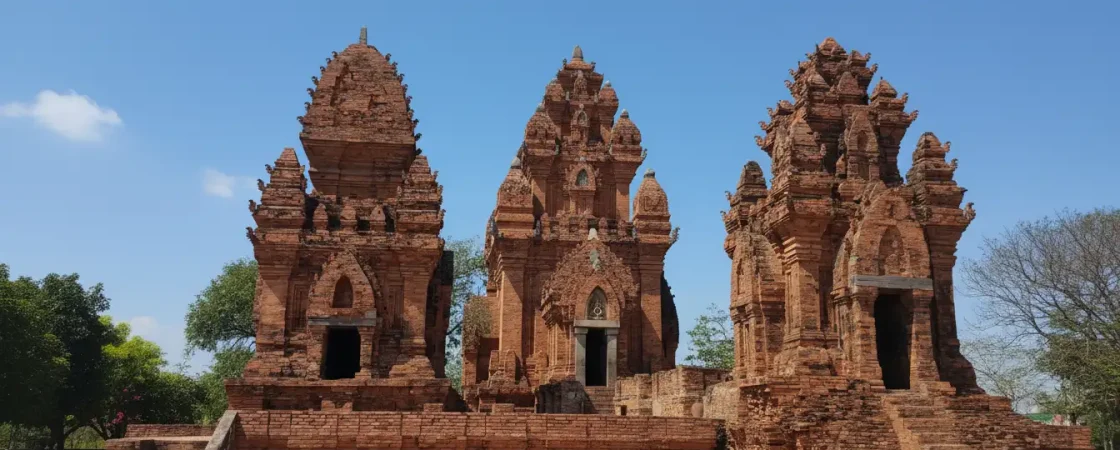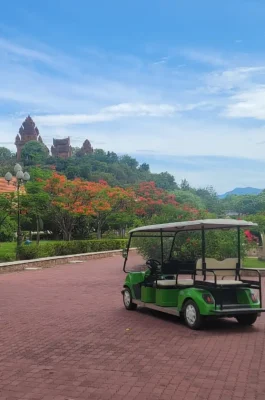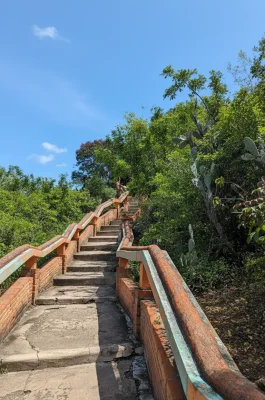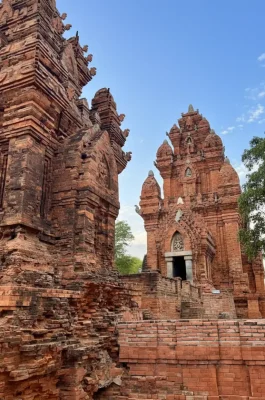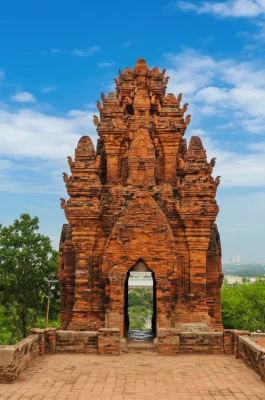The Po Klong Garai Cham Towers (Tháp Po Klong Garai) represent the most splendid and well-preserved temple complex of the ancient Champa Kingdom remaining in Vietnam. Perched atop Trầu Hill near Phan Rang, these remarkable structures offer an invaluable glimpse into the history, religion, and unique architectural ingenuity of the Cham people. The towers serve not only as a tourist destination but also as a vital sacred site for the local Cham community.
History and Religious Significance
King Jaya Simhavarman III (also known as King Chế Mân) commissioned the construction of the towers in the late 13th to early 14th century.
Dedicated to King Po Klong Garai: The complex primarily honors King Po Klong Garai (Po Klaung Garai), who ruled the Panduranga principality (modern Ninh Thuận) from 1151 to 1205. Legend remembers him as a wise ruler who brought prosperity to the people by developing irrigation systems.
Hindu Worship Site: The towers initially functioned as Hindu temples, dedicated to the God Shiva. The Main Tower houses a mukha-linga (a stylized pillar), symbolizing the King’s fusion with Shiva, representing the spiritual center of the complex.
Special National Relic: The Vietnamese government recognized the complex as a Special National Relic site, acknowledging its profound historical and cultural value.
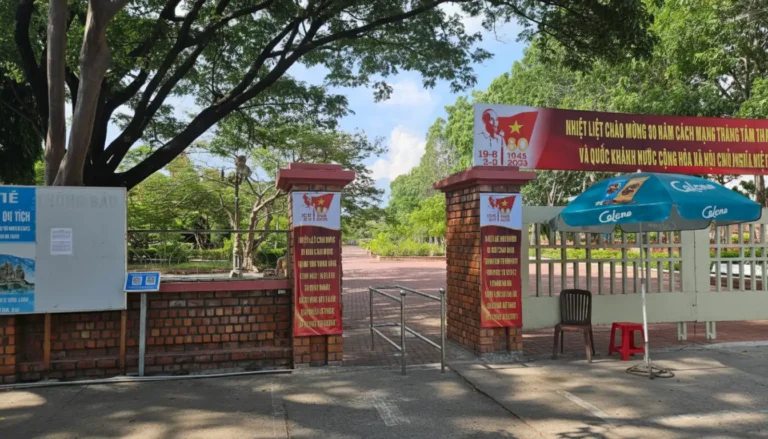
Unique Cham Architecture
The Po Klong Garai Towers exemplify the highly specialized Tháp Mâm style of Cham architecture, distinguished by its red-brick construction and intricate decorative details. Visitors observe a cluster of three main towers:
The Main Tower (Kalan): This imposing structure reaches over 20 meters in height. It features a design with multiple layers and a main entrance facing east, adorned with a notable sculpture of the God Shiva.
The Fire Tower (Thang Chuh Yang Pui): Standing slightly apart, this tower possesses a unique, elongated boat-shaped or saddle-like roof. The Cham people traditionally used this tower to store sacred items and to perform fire rituals.
The Gate Tower (Gopura): The smallest of the trio, this tower serves as the ceremonial entrance, allowing pilgrims to pause and prepare before entering the sacred courtyard.
The most fascinating architectural mystery remains the construction technique: archaeologists still debate the exact composition of the dark-red bricks and the special adhesive used to hold them together so tightly for centuries.
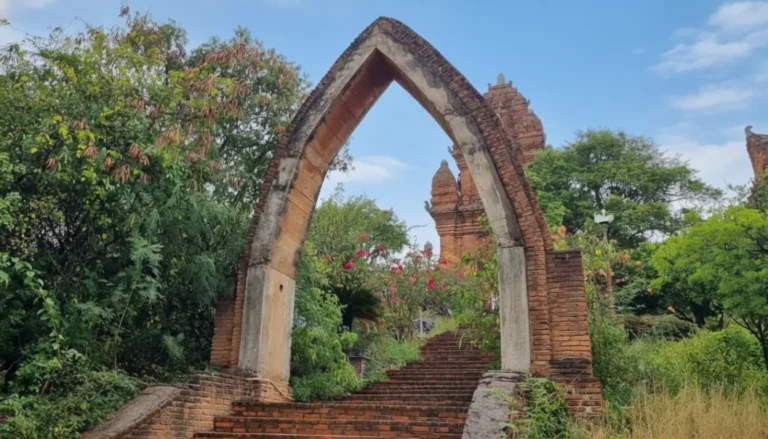
Culture, Festivals, and Visitor Tips
The complex remains an active religious site, hosting the most important festival of the Cham calendar.
Ka Tê Festival: This is the Cham people’s most significant event, typically held in September or October (July 1st of the Cham Calendar). Thousands of Cham people flock to the tower to celebrate the new year and pray for a good harvest, featuring traditional dances and music.
Cultural Experience: A small museum or cultural display at the base offers deeper insight into Cham daily life, including traditional clothing, tools, and the famous Bàu Trúc pottery.
| Information Point | Detail | Note |
|---|---|---|
| Opening Hours | 7:00 AM – 5:00 PM (Daily) | Visit early morning or late afternoon to avoid the midday heat. |
| Entrance Fee | Adults: 20,000 VNĐ; Children: 10,000 VNĐ (Reference) | Fees are used for the upkeep and preservation of the historical site. |
| Accessibility | The towers sit atop a hill. Visitors can walk or take a golf cart service (for a small fee) from the base parking lot. | Wear comfortable shoes for walking on the hill. |
| Getting There | Take a taxi or motor-taxi from Phan Rang City center (about 15 minutes). | The site is easily accessible from National Highway 27. |
The Po Klong Garai Towers invite you to step back in time, exploring the enduring architectural and spiritual legacy of the Champa Kingdom against the dramatic backdrop of Ninh Thuận’s dry landscape.
